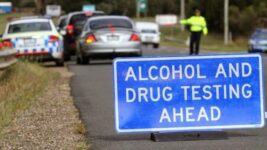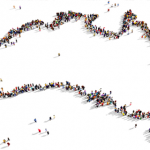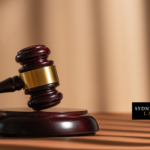The New Offence of Combined Drink and Drug Driving in New South Wales

Driving under the combined influence of alcohol and other drugs has long been understood to compound the dangers of impaired driving.
A drink and drug driving incident involving the roadside deaths of four children in the Sydney suburb of Oatlands last year highlighted this issue. And until recently, there was no specific offence covering driving under the influence of both alcohol and other drugs.
So, sparked by last year’s tragedy, the NSW government has just passed the Road Transport Legislation Amendment (Drink and Drug Driving Offence) Bill 2021.
This legislation inserts section 111A into the Road Transport Act 2013 (NSW) (the RTA) creating the offence of driving with the presence of both a prescribed illicit drug in a person’s oral fluid, blood or urine, as well as a prescribed concentration of alcohol in that person’s breath or blood.
During his second reading speech on the bill, NSW roads minister Andrew Constance explained that the new laws are about maximising deterrence via “three main factors: certainty of punishment”, “severity of the punishment” and “swiftness of the punishment”.
Underneath all the hype around the new law, though, lies the fact that it relies on the pre-existing flawed science that the NSW drug driving regime rests upon, as while police will test for alcohol impairment, when it comes to drugs, testing will focus on their presence, not intoxication.
The new offences
According to the minister, drivers testing for high or mid-range levels of alcohol will undergo a roadside drug test. This will also apply to those with a previous offence, who test for low range alcohol. And if a positive drug test is confirmed by a laboratory, the charge will be upgraded.
There are three tiers of the combined alcohol and drug driving offence contained in section 111A of the RTA.
The first tier is for high-range drink driving with the presence of a prescribed illicit drug in a person’s system. If it is the driver’s first ‘major traffic offence’ within the past 5 years, the maximum penalty is 2 years imprisonment and/or a fine of up to $5,500.
The offence also comes with an ‘automatic’ period of disqualification from driving of 4 years, which can be reduced by a court to a minimum of 18 months.
A second or subsequent offence carries, again, up to 2 years imprisonment but the maximum fine is increased to $11,000. The automatic disqualification in these cases is 6 years, which can be reduced to a minimum of 3 years.
The second type of offence is for mid-range drink driving with the presence of a drug. A first offence carries a maximum of 18 months inside and/or a $3,300 fine. The automatic disqualification is 2 years, which can be reduced to 12 months.
A second or subsequent offence carries 2 years and/or a $6,600 fine. The automatic disqualification is 4 years, which can be reduced to 2 years.
The third tier of offence relates to those who have been convicted of one of the above offences within the previous five years, and are then caught driving with a novice range (0.00 and below 0.019 alcohol concentration for a learner, provisional or unlicensed driver), special range (0.02 and 0.049 for a learner, provisional or unlicensed driver) or low range (0.05 and 0.079 for a fully licensed driver) prescribed concentration of alcohol, with the presence of an illicit drug.
The maximum penalty in such cases is 18 months in gaol and/or a fine of $5,500. The automatic disqualification is 2 years, which can be reduced to 18 months.
The alcohol interlock program applies to the offences, which means a driver can serve less time off the road if he or she has an approved breath testing device installed into their vehicle after the expiry of the disqualification.
The problem with drug driving laws
NSW introduced random breath testing in 1982. This turned drink driving, which had been common, into stigmatised criminal behaviour. Police test for levels of alcohol in a driver’s system, which are scientifically proven to affect driving. And today, most understand the dangers of drink driving.
However, while many believe the 2007-introduced NSW drug driving laws follow the same logic, this is far from the truth. In the case of drugs, police test a person’s saliva for the mere presence of an illicit substance. And there is no indication as to whether they’re intoxicated while driving.
Roadside drug tests only test for the presence of a small number of “prescribed illicit drugs”, these being THC in cannabis, MDMA, cocaine and amphetamines. And while a test gives no indication of drug impairment, it also gives no indication of whether a person is driving on heroin or Valium.
As the prescribed illicit substances can remain in a person’s system after their effect wears off, this means people are regularly booked for drug driving while they’re not under the influence. And hence, drug driving laws are a backdoor method of penalising people for illicit drug use.
Word from Macquarie Street
Long-term critic of state drug driving laws NSW Greens MLC David Shoebridge took a moment out from the chamber on 18 February to make a statement over Facebook setting out his opinion on the Berejiklian government’s combined drink and drug driving offence, which had just been passed.
“Again, the NSW parliament has gone down the wrong road, when it comes to dealing with drugs and alcohol in drivers’ systems,” he said, adding that the Greens have long stated that even a low level of alcohol mixed with a legal or illegal drug can cause major road safety issues.
The Greens justice spokesperson explained that some European nations, including the UK, have implemented laws that see drivers tested for a combination of alcohol and drugs, which is done by testing the level of both substances to ascertain whether an individual is intoxicated at the wheel.
“That’s the way the law should work in NSW, but that’s not what we got today,” Shoebridge continued. He then underscored that the situation that allows people to drive with a highly dangerous mix of legal benzodiazepines and alcohol in their systems hadn’t been addressed.
On a wing and a prayer
Former Lismore magistrate David Heilpern has been advocating for drug driving law reform since mid-2020. After giving up the gavel, he commenced his campaign spurred on by the long line of defendants that appeared before him to claim they weren’t intoxicated when charged.
Heilpern told Sydney Criminal Lawyers last year that the laws were “completely nonsensical”. He added that “it just doesn’t make any sense to be taking people off the road, who are not ill-affected by whatever substance they’re consuming”.
In the case of the new laws, people will be taken off the road for being drunk. But if there’s the mere presence of a certain number of drugs in their systems, heavier penalties will be applied, but that won’t necessarily be for any higher danger posed.
As Shoebridge pointed out, a mix of drink and drugs can make driving whilst under the influence of much lower levels of alcohol far more dangerous.
So, if the Coalition wanted to ensure greater road safety, it could have addressed this regularly occurring situation on our state’s roads.
But for now, the road minister has simply enacted lazy laws that do nothing to improve road safety from the level it was at prior to the passing of the legislation. And citizens will continue to receive steep fines for traces of drugs that have already worn off.
While those driving stoned and legally tipsy will simply be waved on by officers to hopefully make it home safely.
Going to court for a traffic offence?
If you are going to court for a traffic offence, call or email Sydney Criminal Lawyers anytime to arrange a free first consultation with an experienced, specialist traffic lawyer who will accurately advise you of your options, the best way forward, and fight for the optimal outcome in your specific situation.








